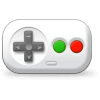-
Posts
4,692 -
Joined
-
Last visited
-
Days Won
34
Content Type
Profiles
Forums
Articles
Downloads
Gallery
Blogs
Everything posted by JoeViking245
-
To do this, add a Custom Field ("My Custom Field" or whatever) to one of your games. You'll need to enter a Value ("True" or whatever) also. Otherwise, it won't save. Then save your changes. Now select all the games you want to add this to and click Edit. Choose the Custom Field: you added and enter a value. etc.
-
-
.thumb.png.c9faf450e4d2b690a819048b18173f61.png)
RetroAchievement Badges
JoeViking245 commented on JoeViking245's file in Third-party Apps and Plugins
The easiest solution is to: once you've setup your Famicom platform and downloaded all your metadata and media for that platform, change the scrape-as to Nintendo Entertainment System. Once your platform is good-to-go, changing the scrape-as won't have an effect on anything other than allowing this plugin to work.- 131 comments
-
- retroachivements
- badges
-
(and 1 more)
Tagged with:
-
.thumb.png.c9faf450e4d2b690a819048b18173f61.png)
RetroAchievement Badges
JoeViking245 commented on JoeViking245's file in Third-party Apps and Plugins
- 131 comments
-
- retroachivements
- badges
-
(and 1 more)
Tagged with:
-
1st thought is to change ~Esc:: to $Esc:: If that still don't work, verify that the exit script is even getting touched. After the $Esc:: line, add in something like "SoundBeep,1000,500". Add it several times if you'd like. Then when in the game, press ESC and see if you hear the beeps. If you press ALT+F4, it won't work.
-
Can you show me both your scripts? (the one that loads it and the one that [is supposed to] kill it) Can you also show screenshots of the 2 Additional Apps? Edit each Additional App and share those [edit] screens.
-
I think I remember for sure now why I stopped messing with it. And a sure reminder as to not go trying it again. lol You might have a little better luck with something like /MAME/plugins/autofire/init.lua
-
That might have been when I gave up. lol Time for a little deeper digging. It's "documented" in the luaengine.cpp file. mame/luaengine.cpp at master · mamedev/mame · GitHub In the commented section emu library and starting on line 603. Have fun.
-
Yes. It's launched in conjunction with the game starting and stays active until either the script closes itself (ExitApp) or the game exits (then it's forced closed). Scripting MAME via Lua — MAME Documentation 0.249 documentation (mamedev.org) MAME Lua Class Reference — MAME Documentation 0.249 documentation (mamedev.org) They're pretty cool and can do A LOT of things. I do pretty well with AHK, C# and batch files (which are actually lot more powerful than you can imagine). I can look at a Lua script and understand and follow through with what it's intending to do. But I'll be damned if I could write/create one from scratch. lol But it's been a couple years since I've looked at them. In the last year, MAME has updated their Lua scripting documentation. Namely in the Class Reference section. Though I haven't really looked at it. Maybe you'll have more patience than me.
-
.thumb.png.c9faf450e4d2b690a819048b18173f61.png)
Treating NeoGeo games differently en-masse in MAME
JoeViking245 replied to vaderag's topic in Emulation
There may be an easier way, but one way is (assuming standalone MAME), in your /MAME/cfg/ folder, make a backup of your default.cfg file. Open MAME and set the inputs as you want them for NeoGeo. Save and exit. Move the 'new' default.cfg file to /MAME/crtlr/ and rename it something like neogeo.cfg. go back to your /MAME/cfg/ folder restore the backup of your default.cfg file. in your /MAME/ini/ folder, create a [text] file and call it "neogeo.ini" in there, put "ctrlr neogeo" (or whatever you named the "something like neogeo.cfg." [minus ".cfg"]) Now whenever you load a game that has the Source as neogeo (MAME will know), it will load the controller settings in 'neogeo.cfg'. -
Good. 🙃 Kind of doubt it. But it may have been something in a MAME offshoot.?.?.. MAMEui, qmc2, or something funky like that. To limit save/load to a single slot, I can see having both pros and cons (compared to having up to 10). Depends on the end-user's needs/requirements. I do know that you can have a specific game or system automatically load a specific save state by creating an ini file. In the ini folder create a text file like mslugx.ini (for Metal Slug X) or neogeo.ini (for all NeoGeo games) and put in just 1 line. "state 1". Every time you load that game or a game using that source, save state 1 will load automatically. If you reassign the save state to Shift+P, I imagine if you hold the P a little longer, you'd end up sending Shift+PPPPPPPPPP. Ultimately saving it in the "P" slot. lol Compiling your own as both links talked about, would be a pain. Though not really difficult. But still a pain. I think it'd be a lot easier to just have an AHK script and put it in the Running Script section of your MAME emulator. Chances are that it won't work if you want to upload your high scores to the Community Leaderboard. To make it work, you need to have "-keyboardprovider dinput" in the command line (which is put there by default). This example will load the save state in slot 1 (if one exists) for a game when you press "A". SetKeyDelay, 0, 50 a:: { send {F7} sleep 100 send 1 } Yes, you will still see a popup for a split second. Because of how MAME is, it's not a popup "window" you can hide. You could also change the "a" to "$F7" to have F7 load slot 1 (vs it just bringing up the option menu). If you wanted to get real crazy, you could probably create a lua script plugin to do this and have it work directly in MAME. With this, you wouldn't have to compile-your-own MAME anytime you update. Or ever, for that matter. Here's something you might be able to modify. If you're so inclined. It's set to save and load to the "auto" slot [only]. http://forum.arcadecontrols.com/index.php/topic,151810.msg1623419.html#msg1623419
-
Having an AHK script to do that makes sense and is probably the only way. I don't think MAME has a setting-of-sorts for always using slot "1" (or whatever). Have you tried this during gameplay? Vs. pausing then 'rewinding'. May double check your key assignments in MAME. Honestly, I never paid attention that rewind was even a thing. I've used the Insert [key] for fast forwarding though.
-
Have you changed the default key(s) in MAME for save and load? When you say "go through a dialog", are you talking about accessing the save/load feature available in the pause menu (Pause Screen)? If you go through the pause screen, LB is setup to use MAME's default F7 (Load) and Shift+F7 (Save). But sounds like you may have had (at one point?) set up different keys in MAME itself to a single key [respectively]. Which, regardless of how it's setup in the pause menu, would still work for you directly in MAME. Just not via the pause menu. You may need (want?) to disable LB's pause menu. At least for MAME. I'm pretty sure that when you're in the pause screen, direct keystrokes are not sent to the emulator. If you want to disable it (at least do so for testing), edit your MAME emulator and in the Pause Screen section, un-check Enable Game Pause Screen.
-
What version is your MAME emulator? (example “0.249”) Can you provide Screenshots of the following sections: Go to Tools, Manage, Emulators, select the emulator you setup for MAME and provide a screenshot of Details Associated Platforms
-
.thumb.png.c9faf450e4d2b690a819048b18173f61.png)
"object reference not set to an instance of an object"
JoeViking245 replied to Joe35car's topic in Troubleshooting
(This is useful information as to what exactly triggers the popup.) So the popup appears when you go to launch a game? Not before? Which LB Theme are you using? If you switch to a different Theme, do you get the same error popup? Can you share a screenshot of the error window. Have you looked at any debugging logs? Make sure it's on (Tools, Options). Exit LB, then restart it (to create a fresh log file). As soon as the error pops up, click OK on it and then close LB. (Doing it this way will create a smaller log file.) Then look at the most recent (just created) log file. -
.thumb.png.c9faf450e4d2b690a819048b18173f61.png)
"object reference not set to an instance of an object"
JoeViking245 replied to Joe35car's topic in Troubleshooting
So LaunchBox loads? Looks normal? Then the popup shows with no other info? If you click Close on the popup, does LB then shutdown (close)? If it was a .NET Core issue, I believe it would say so. But there's more info here regarding that. -
You need the .NET Desktop Runtime 3.1.xx version.
-
It shouldn't keep the shift key pressed. If it did, F3 would be staying pressed too. You could try instead... F1::Send {Shift Down}{F3 Down}{Shift Up}{F3 Up} This way you know Shift is being released.
-
The MAME Arcade Full Set [Import] Wizard will allow for combining parent and clone ROMs. I don't believe importing for other platforms will. No. If that works, it's just a coincidence. If they're not really name BLES and BLUS and are actually named the exact same, there's a couple ways to go about this. One is to edit one of them and change the games Title to something like BLUS-US to distinguish it from the other. Then combine. Another is to just combine them, then Edit the combined game(s). Go to the Additional Apps section and click the one you want to be default and then click Make Default (in the lower right corner of that screen).
-
You can use additional apps for this purpose. You'll need to create 2 additional apps (AHK scripts) to do what you're wanting. One that will Automatically Run Before Main Application (load the Sinden app) and that will Automatically Run After Main Application (close the Sinden app). Create the 2 respective AHK scripts and then add them to your game as outlined here. Check the appropriate box to run Before/After for each additional app.
-
I think what you're asking is to combine the 2 (or more) games into one [visible] entry and then be able to choose which region version to play. Click the EU version and then press and hold Ctrl and click on the US version. (Let go of the Ctrl key) With the 2 games now both selected, right-click on one of them and select Combine Selected Games... and follow the prompts. The 1st prompt is to select which game will be the 'main' game. This will be the one that is visible and the default one that will play. To play [one of] the other region(s), right click the game and select Play Version then select the version you want to play.
-
F1::Send +{F3}
-
I use a batch file to start BigBox almost daily. The batch file 1st loads settings to make the TV my primary monitor, then loads BB using the "start /w" command. When BB exits, the batch file then loads settings to make my arcade cab be the primary monitor again. My comment above regarding "not tested" was referring to if you shell your PC directly into BB, then attempt to start explorer.exe afterwards. If you're not doing the 'shell' thing and just want to start a program after BB exits, then I can say for certain this does work.
-
.thumb.png.c9faf450e4d2b690a819048b18173f61.png)
RetroAchievement Badges
JoeViking245 commented on JoeViking245's file in Third-party Apps and Plugins
Thank you! Special just for you. Added Arduboy for when you next run the Updater. Replace your existing "RetroachievementBadges.dll" file with the one inside the zip. (Unblock the file as necessary). Start LaunchBox and run the Updater. (Arduboy will also be available in subsequent Official Releases.) As you mentioned, since LaunchBox doesn't have a Scrape As for this unique handheld game console, you MUST name your platform "Arduboy". RetroAchBadge (v2.3.5sp).7z Enjoy.- 131 comments
-
- 3
-

-
- retroachivements
- badges
-
(and 1 more)
Tagged with:
-
Look in Preferences, Configure Keys...., make sure Disable ESC Key is un-checked.

.thumb.png.c9faf450e4d2b690a819048b18173f61.png)






